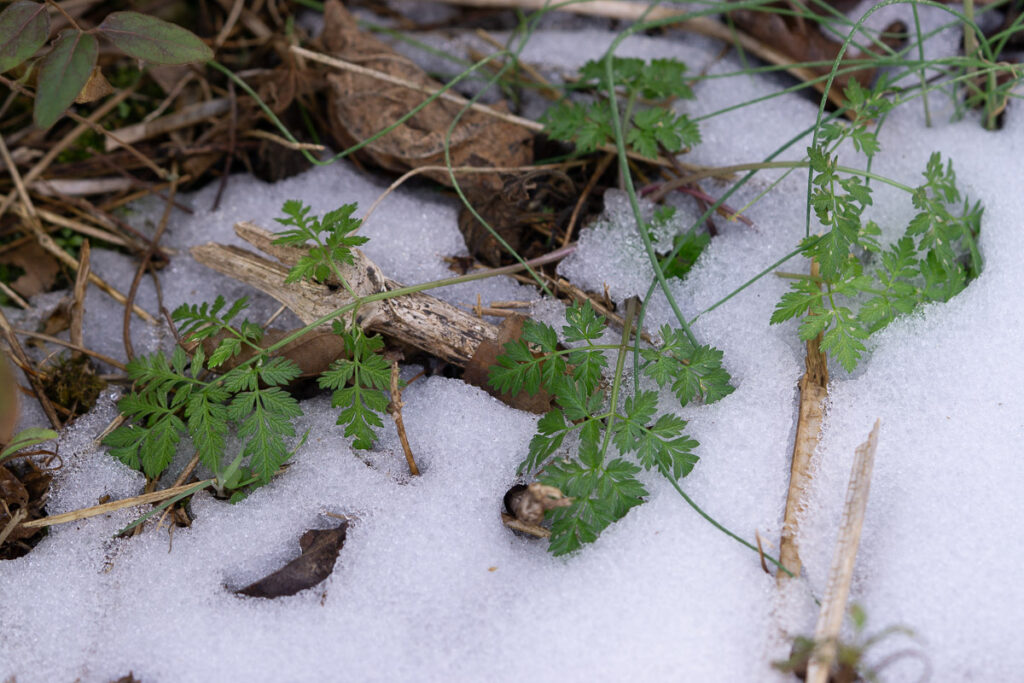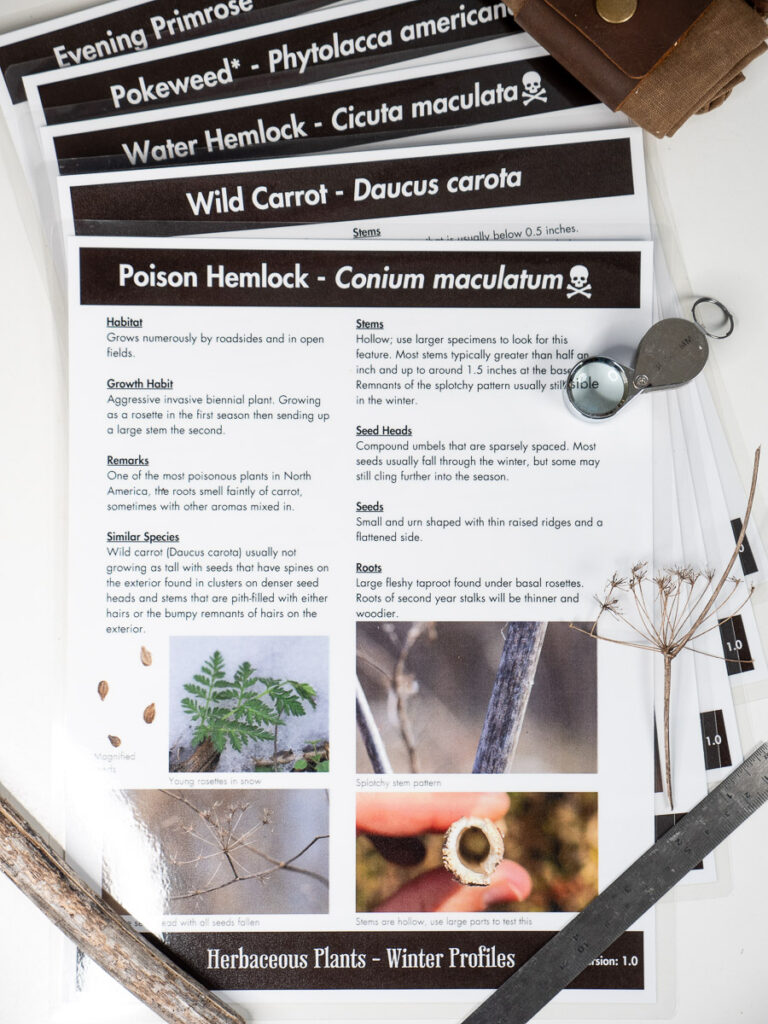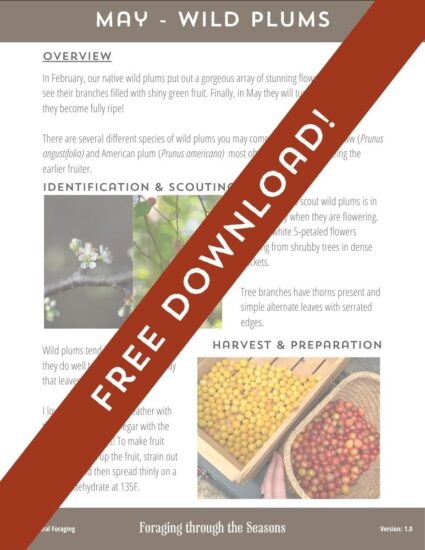Poison Hemlock is one of the closer lookalikes to an edible species like Wild Carrot (Daucus carota) both in the winter and the summer. Differentiating the two and my thoughts on foraging wild carrot in the wintertime is expounded more in my article, Wild Carrot vs Poisonous Lookalikes in Winter.
Either way, I think it’s important for foraging confidence to be able to recognize common deadly plants like poison hemlock throughout every season!
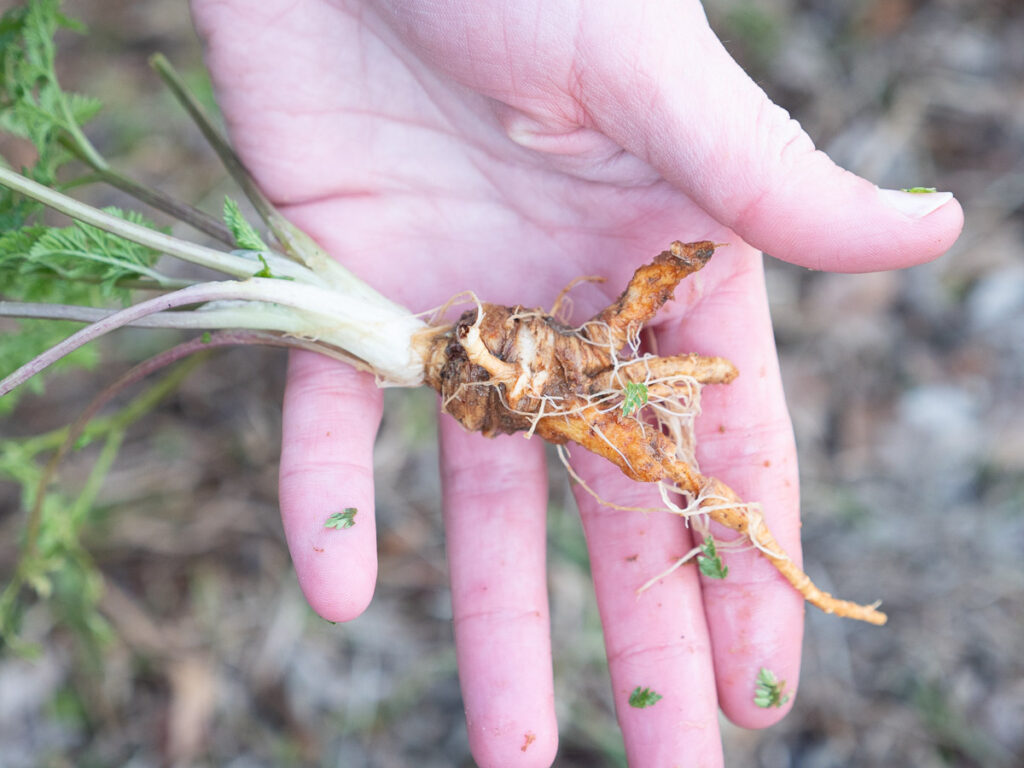
Winter characteristics of poison hemlock
Here are the most important characteristics that you should pay attention to when trying to spot poison hemlock in the winter.
I also have all of this information in a downloadable PDF guide format that you can get by clicking here!
- Stems of poison hemlock are hollow; use larger specimens to look for this feature. Most stems typically greater than half an inch and up to around 1.5 inches at the base. Remnants of the splotchy pattern usually still visible in the winter.
- Seed Heads are compound umbels that are sparsely spaced. Most seeds usually fall through the winter, but some may still cling further into the season.
- Seeds small and urn-shaped with thin raised ridges and a flattened side.
- Roots are a large fleshy taproot in the first year that thins into the plant’s second year.
- Habitat: Grows numerously by roadsides and in open fields.
- Growth Habit: Aggressive invasive biennial plant. Growing as a rosette in the first season then sending up a large stem the second.
- Remarks: One of the most poisonous plants in North America, the roots smell faintly of carrot, sometimes with other aromas mixed in.
- Similar Species: Wild carrot (Daucus carota) usually not growing as tall with seeds that have spines on the exterior found in clusters on denser seed heads and stems that are pith-filled with either hairs or the bumpy remnants of hairs on the exterior.
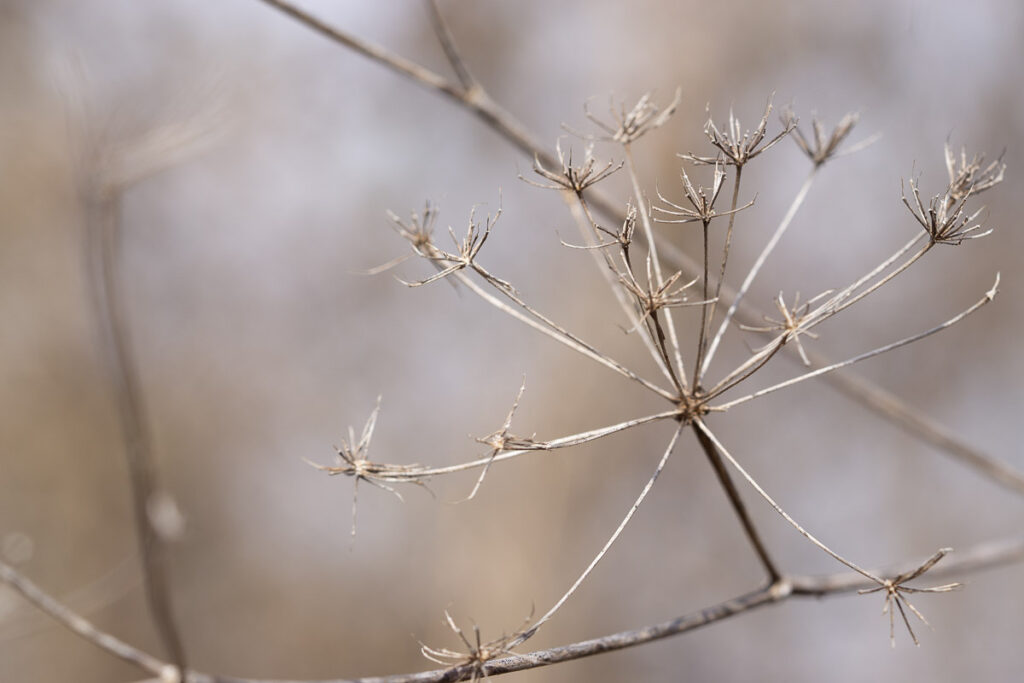
Note that the above characteristics were observed directly from the species Conium maculatum, the most common species in the genus, by me.
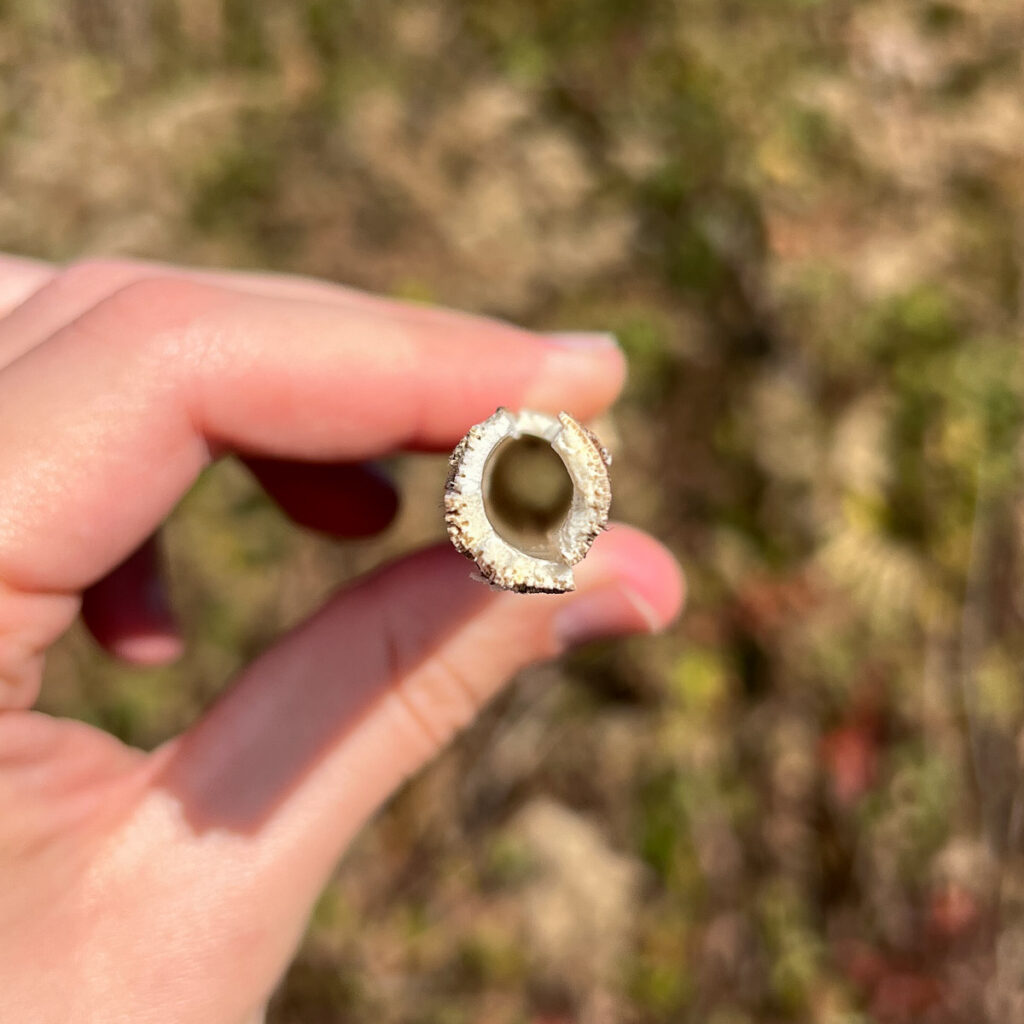
Distinguish poison hemlock from water hemlock
Water hemlock (Cicuta) species, including eastern water hemlock (Cicuta maculata) and western water hemlock (Cicuta douglasii) are both native North American species that don’t typically grow in an obtrusive way. I don’t see a reason to expend a lot of effort going out of your way to remove them.
However, poison hemlock (Conium maculatum) is a noxious, aggressive, invasive plant from Eurasia that I think should be removed (with caution) if possible.
Here are the main ways to distinguish the two:
- Environment: Water hemlock prefers wet areas close to water and can tolerate shady conditions well. Poison hemlock prefers dryer, open, sunny areas like fields and roadsides.
- Seeds: The seeds of water hemlock are round, somewhat urn-shaped with light-colored ridges. Poison hemlock also has urn-shaped seeds, but usually with one side flattened somewhat and with ridges that are more narrow.
- Root: The roots of water hemlock typically grow in a circle pattern, growing out in every direction. Poison hemlock roots grow more as a single taproot, sometimes with 1-2 offshoots from the main root.
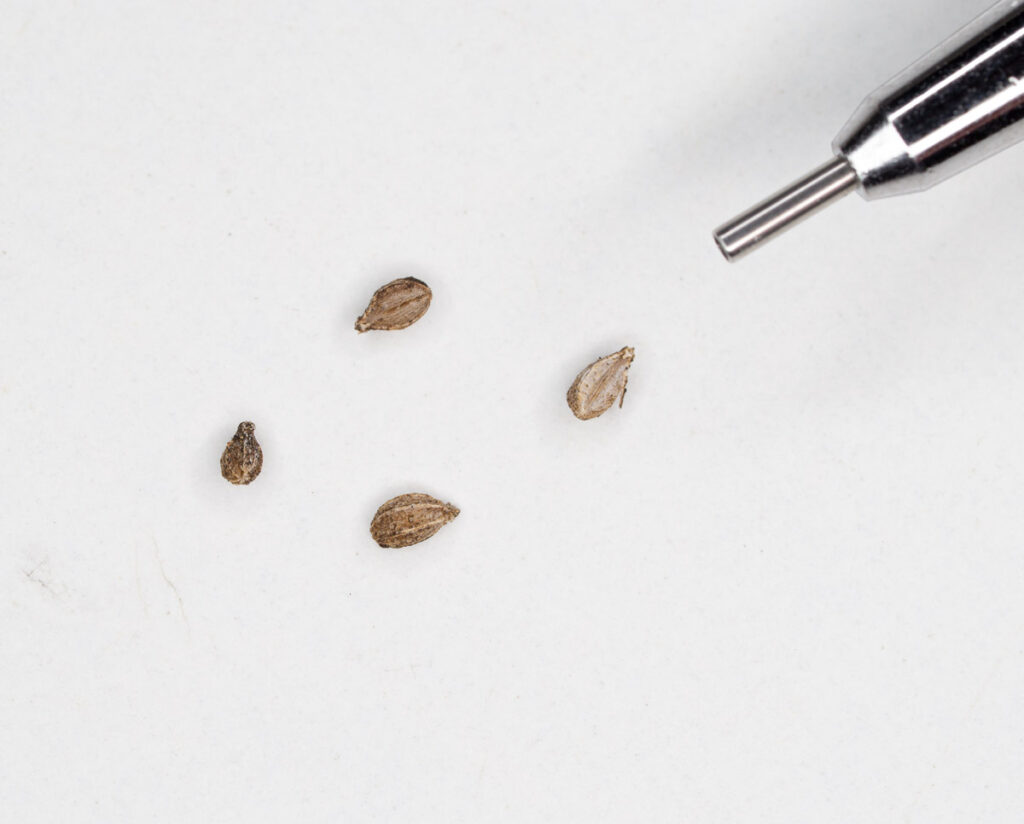
Support my work
You can get many more downloadable guides from my Patreon page, including other herbaceous plants plus wild medicinal trees and fruit trees!
Consider becoming a member if you would like to see more guides like this!

